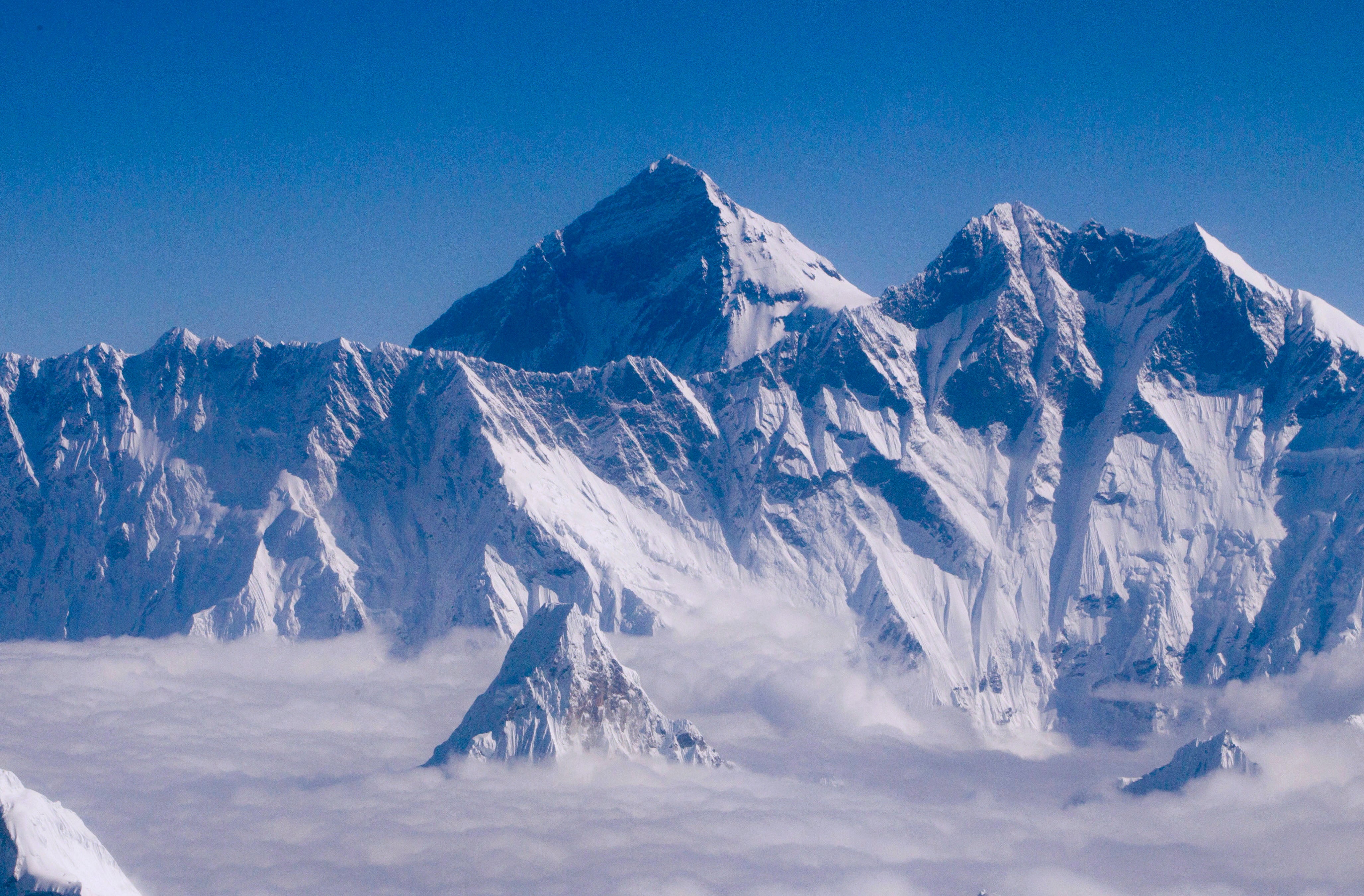Mount Everest ‘grows by nearly a metre’ as China and Nepal agree on new height
World’s tallest mountain has grown by at least 86cm since last official measurement

Your support helps us to tell the story
From reproductive rights to climate change to Big Tech, The Independent is on the ground when the story is developing. Whether it's investigating the financials of Elon Musk's pro-Trump PAC or producing our latest documentary, 'The A Word', which shines a light on the American women fighting for reproductive rights, we know how important it is to parse out the facts from the messaging.
At such a critical moment in US history, we need reporters on the ground. Your donation allows us to keep sending journalists to speak to both sides of the story.
The Independent is trusted by Americans across the entire political spectrum. And unlike many other quality news outlets, we choose not to lock Americans out of our reporting and analysis with paywalls. We believe quality journalism should be available to everyone, paid for by those who can afford it.
Your support makes all the difference.Mount Everest, the world’s highest mountain, is now 86cm taller than had previously been officially calculated, Nepal and China have announced.
Both countries agreed a new height of 8,848.86 metres (29,032ft) – a slight increase on Nepal’s previous figure but adding more than four metres to the height China previously accepted for the peak.
The new height was agreed after surveyors were sent by China and Nepal to their respective sides of the mountain in 2019 and 2020.
Debate over the actual height of the peak has intensified in recent years over concerns that it might have shrunk after a major earthquake in 2015. Disagreements have also focused on whether snow covering the summit should be included.
Nepal previously measured Everest's height as 8,848 metres, while China put it at 8,844.43 metres because it did not include the snow cap.
Wrangling over the exact height of the mountain, named after George Everest, a former surveyor general of India, has kept survey teams busy for decades.
The figure of 8,848 metres became widely accepted following an expedition by Indian officials in the 1950s. That number was used by cartographers until the late 1990s, despite conflicting surveys in the intervening decades, including in 1987 when Italian experts recorded a height of 8,872 metres.
An American survey in 1999 used GPS technology to settle on 8,850 metres, with a two metre margin of error, a height that became widely recognised.
Then in 2005 a Chinese expedition determined the “rock height” of the mountain as 8,844.43 metres – a figure Nepal shunned in favour of a slightly taller “snow height”.
The new agreement puts an end to the dispute between the two countries whose border runs across Everest’s summit point.
Chinese leader Xi Jinping said the two sides were committed to jointly protecting the environment around Everest and cooperating in scientific research.
It is not just the height of Mount Everest that has apparently changed over the years – its shape has altered, too.
In 2017, a British mountaineer reported that a cliff face described as the last major obstacle on the main route to the summit had collapsed, potentially making it even more dangerous for climbers trying to reach the world’s highest peak.
The Hillary Step, named after Sir Edmund Hillary, who made the first ascent with Tenzing Norgay in 1953, is believed to have collapsed during the 2015 earthquake.
Located on the southeast ridge, the 12-metre rocky outcrop was known to be the most technically difficult part of main route on the Nepalese side.
Mountaineers had suspected the quake had altered the cliff but heavy snow made it difficult to assess to what extent it had changed.
Everest is the world’s highest mountain only in terms of distance from sea level. The peak which rises the tallest into space from Earth’s centre is Ecuador’s Chimborazo.
Hawaii’s Mauna Kea is a taller than both from top to bottom – but since much of it is under the sea, it does not count in official highest mountain tallies.

Join our commenting forum
Join thought-provoking conversations, follow other Independent readers and see their replies
Comments